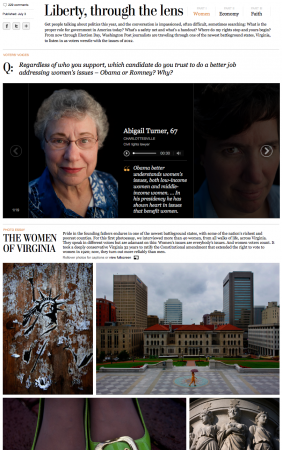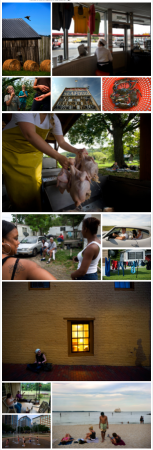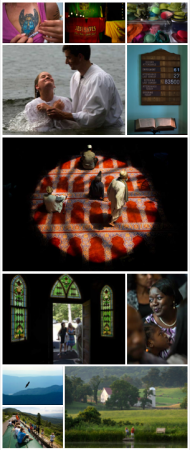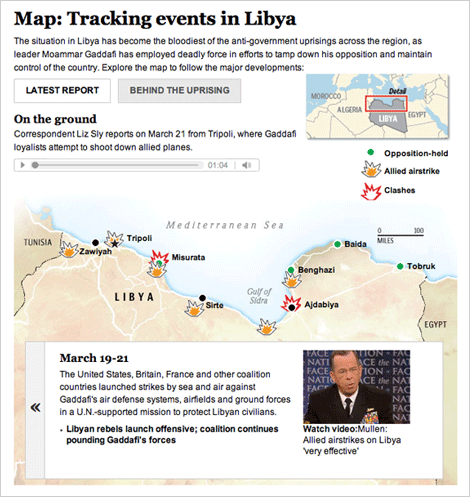The Post has some of the best photojournalists in the world, and it’s always such a pleasure to work with them. For this three-part series on Virginia voters, Melina Mara took portraits of Virginians and interviewed them. Nick Kirkpatrick recorded and edited audio from the interviews. Then Bonnie Jo Mount traveled the state to photograph the themes: women, economy, and faith. Grace Koerber designed the beautiful package, and I was her editor. After she left the Post to go back to school for interior design, I handled the second two installments, putting together the mosaics and working on package branding. I love the slideshow and mosaic pattern Grace designed — it’s an inspiring way to do individual portraits and interviews. The ability to view images as a mosaic or in a full-screen gallery view is awesome.
For part two and three, I designed the mosaics. It was fun to lay out the page, especially with Bonnie Jo’s amazing photographs to work with. You can’t go wrong:












![[Scene In]](http://3.bp.blogspot.com/_1NI9wgirUFw/Sp86PuFr9MI/AAAAAAAAAGY/vcjW3tiNkTY/s400/Picture+1.png)